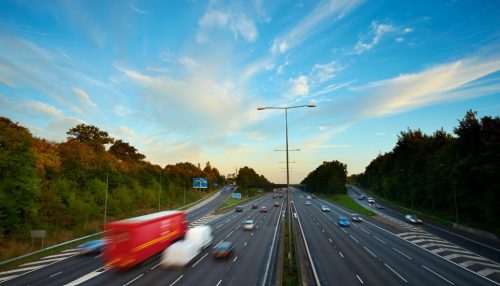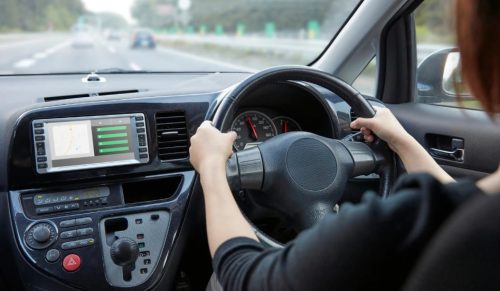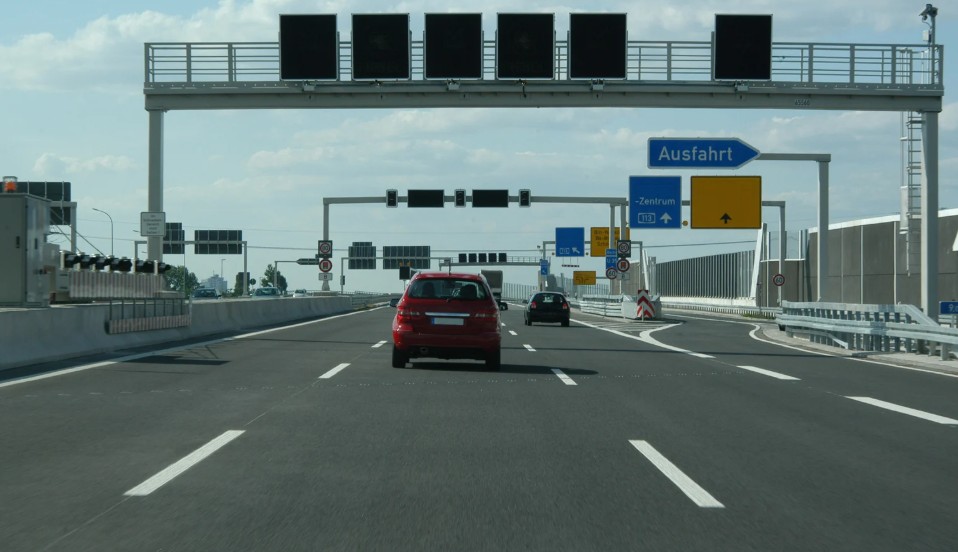Table of Contents
Motorways are an essential part of the UK’s transport network, connecting cities, towns, and regions with high-speed roads designed for efficient travel.
These roads are built to handle large volumes of traffic while maintaining safety standards through controlled access and specific regulations.
But have you ever wondered why motorways are different from other roads, how they function, or what rules apply to them?
Understanding motorways is crucial for all drivers, whether you’re a daily commuter or planning a long road trip.
This guide explores what motorways are, their importance, how they differ from other roads, and the future of the UK motorway system.
By the end of this guide, you’ll have a clear picture of how motorways contribute to safer and more efficient travel in the UK.
What Are Motorways?
Motorways are high-speed, multi-lane roads designed for long-distance travel, connecting major cities and regions across the UK.
These roads are built with controlled entry and exit points to ensure smooth traffic flow, reducing congestion and accidents.
Unlike standard roads, motorways are restricted to specific types of vehicles, excluding bicycles, pedestrians, and slow-moving farm vehicles.
Motorways are identified by the prefix “M” followed by a number, such as M1, M6, and M25, making them easily distinguishable from other roads.
They are regulated by the Highway Code, which sets rules for speed limits, lane discipline, and road safety.
Key Characteristics of Motorways
- Minimum speed limits for efficient traffic movement
- Three or more lanes in each direction
- Hard shoulders for emergency stops
- Service stations at regular intervals for fuel and rest breaks
With dedicated signage and advanced safety measures, motorways are the backbone of the UK’s road infrastructure, enabling faster and safer travel.
Why Are Motorways an Important Road Network?

Motorways play a crucial role in the UK’s transport system by ensuring smooth, efficient, and safe long-distance travel. Their significance can be seen in several key areas:
Economic Importance
- Support the movement of goods and services, boosting trade and commerce
- Facilitate quick transportation of perishable goods
- Connect business hubs, reducing travel time for workers
Traffic and Safety Benefits
- Reduce congestion by providing faster and wider roads
- Improve road safety with controlled access and strict driving rules
- Offer alternative routes during roadworks or emergencies
National Connectivity
- Link major cities, towns, and ports
- Provide access to airports and industrial zones
- Enhance emergency response times for ambulances and law enforcement
The efficiency of the motorway network significantly impacts the economy and everyday life, making it an indispensable part of the UK’s infrastructure.
How Do Motorways Differ from Other UK Roads?
Motorways are distinct from other types of roads, such as A-roads and dual carriageways, due to their design, speed limits, and regulations.
Key Differences
- Access Control: Motorways have controlled entry and exit points, while A-roads often have direct property access.
- Speed Limits: Cars can travel up to 70 mph on motorways, whereas A-roads typically have a 60 mph limit.
- Lane Structure: Motorways have multiple lanes with dedicated overtaking lanes, unlike A-roads, which may have single-lane sections.
Comparison Table
| Feature | Motorways | A-Roads | Dual Carriageways |
| Speed Limit | 70 mph | 60 mph | 70 mph |
| Access Points | Limited exits | Multiple access points | Controlled intersections |
| Lane Markings | Blue signs, white lines | Green signs, white lines | Green signs, white lines |
Motorways provide a safer, more structured driving environment, reducing accident risks and ensuring smoother traffic flow.
What Are the List of Motorways in the UK?

The UK motorway network consists of several key routes that connect different regions. Here are some of the most important motorways:
List of Major Motorways
| Motorway | Route | Existed Since | Average Daily Vehicle Flow | Length (miles) | Length (km) |
| M1 | London to Leeds | 1959 | 168,763 | 193.5 | 311.4 |
| M6 | Rugby to Gretna | 1958 | 173,201 | 232.2 | 373.7 |
| M25 | London ring road | 1975 | 216,108 | 117 | 188 |
| M62 | Liverpool to Hull | 1960 | 161,700 | 107 | 172 |
| M5 | Birmingham to Exeter | 1962 | 127,584 | 162.9 | 262.2 |
| M8 | Edinburgh to Glasgow | 1965 | 160,484 | 60.3 | 97 |
| M4 | London to Cardiff | 1963 | 161,807 | 189 | 304 |
| M60 | Manchester orbital | 1998 | 180,501 | 36 | 58 |
| M23 | London to Gatwick Airport | 1974 | 110,574 | 15.9 | 25.6 |
| M11 | London to Cambridge | 1975 | 121,964 | 55 | 88.5 |
Upgraded A-road Motorways
Some A-roads have been upgraded to motorway status to improve traffic flow. Notable upgraded routes include:
- A1(M): Connects South Mimms to Newcastle-upon-Tyne.
- A167(M): An urban motorway in Newcastle.
- A38(M): A spur leading to Birmingham.
These upgrades ensure smoother and faster travel on busy routes, enhancing connectivity across the UK.
The UK’s motorway network plays an essential role in daily commuting and long-distance travel.
From major routes like the M1 and M6 to regional roads like the M8, these motorways facilitate fast and efficient travel across the country.
What Are Smart Motorways and How Do They Work?
Smart motorways are technologically enhanced motorways designed to optimize traffic flow and reduce congestion without expanding road infrastructure.
They use advanced systems, such as cameras and sensors, to monitor and manage traffic dynamically.
What are the Main Features of Smart Motorways?
- All-lane running: Converts the hard shoulder into a permanent lane to increase capacity and ease congestion.
- Variable speed limits: Adjusts speed limits based on real-time traffic conditions, displayed on overhead electronic signs.
- Emergency refuge areas (ERAs): Designated safety zones spaced along the motorway for vehicles to stop in case of breakdowns.
Smart motorways aim to improve traffic efficiency and reduce journey times by maximizing road usage.
However, they have sparked debate due to safety concerns, especially the removal of hard shoulders.
While smart motorways help manage congestion effectively, authorities continue to assess their impact and make improvements to enhance driver safety.
What Are the Speed Limits and Lane Rules on UK Motorways?

UK motorways have specific speed limits and lane rules to ensure smooth and safe driving.
The national speed limit for cars and motorcycles is 70 mph, while lower limits apply to larger vehicles: 60 mph for lorries over 7.5 tonnes and 62 mph for buses and coaches.
What Are the Lane Rules?
- Left lane: Used for normal driving and should be kept clear when not overtaking.
- Middle lane: Primarily for overtaking slower-moving traffic but should not be used unnecessarily.
- Right lane: Only for overtaking; drivers must return to the middle or left lane once they have passed a vehicle.
On smart motorways, speed limits can change dynamically based on traffic conditions and are displayed on electronic overhead signs.
Speed cameras enforce these limits, and failing to follow lane discipline or exceeding speed limits can result in fines and penalty points.
Adhering to these rules helps prevent accidents and keeps motorway traffic flowing efficiently.
What Are the Essential Rules for Driving on Motorways?
Following the Highway Code is crucial for driving safely on UK motorways. These rules help maintain smooth traffic flow, reduce accidents, and ensure a safe driving experience.
Motorway driving differs from regular roads due to higher speed limits, multiple lanes, and controlled access.
General Driving Rules
- Stay in the left lane unless overtaking: The middle and right lanes should only be used for overtaking slower vehicles.
- Use indicators when changing lanes: Signaling early allows other drivers to anticipate your movements, reducing accident risks.
- Keep a safe stopping distance: The two-second rule helps prevent rear-end collisions, especially at high speeds.
Hard Shoulder Rules
- Only use in emergencies or when directed: Stopping on the hard shoulder without a valid reason can be dangerous and illegal.
- Look for emergency refuge areas on smart motorways: These are designated stopping points when hard shoulders are unavailable.
Understanding and following these motorway driving rules ensures safety for all road users.
What Safety Measures Should You Follow on a Motorway?

Motorway driving requires extra caution and preparation due to higher speeds and increased traffic volumes.
Being aware of safety measures helps drivers avoid accidents and ensures a smoother journey.
Before the Journey
- Check tyre pressure and fuel levels: Running out of fuel or having a blowout on a motorway can be extremely dangerous.
- Plan rest stops: Fatigue is a major cause of accidents, so taking breaks at service stations helps maintain alertness.
During the Drive
- Keep a safe distance from other vehicles: Maintaining a gap of at least two seconds helps prevent sudden collisions.
- Avoid distractions like mobile phones: Using a phone while driving is illegal and significantly increases the risk of accidents.
- Watch for changing speed limits on smart motorways: Variable speed signs adjust limits based on traffic conditions, so staying alert is crucial.
By following these essential safety measures, you can reduce the risk of accidents and ensure a stress-free motorway experience.
What Are the Common Traffic Issues on UK Motorways?
Despite being designed for efficiency, UK motorways experience various traffic-related challenges that impact travel times and road safety.
These issues range from congestion to accident hotspots and smart motorway controversies.
Congestion Causes
- Peak-hour traffic: During rush hours, motorways like the M25 and M6 experience severe delays due to high vehicle volumes.
- Roadworks and lane closures: Maintenance projects can cause significant slowdowns, especially when multiple lanes are affected.
Accidents and Incidents
- Weather-related hazards: Fog, heavy rain, and snow reduce visibility and increase accident risks on motorways.
- Sudden braking causing collisions: Tailgating and abrupt stops often lead to multi-vehicle crashes.
Smart Motorway Controversies
- Concerns over safety without hard shoulders: Critics argue that removing hard shoulders increases the risk of stranded vehicles being hit.
Addressing these traffic issues with better planning, improved enforcement, and infrastructure upgrades is key to ensuring efficient motorway management.
How Will UK Motorways Evolve in the Future?

The UK motorway network is continuously evolving to enhance efficiency, reduce congestion, and improve safety through modern technology and strategic upgrades.
One major development is the expansion of smart motorways, where AI-driven traffic management systems will regulate speed limits and lane usage more effectively. These automated systems will help reduce congestion and improve overall traffic flow.
Another key change is the expansion of major routes, with additional lanes and wider roads to accommodate increasing traffic demand. This will ease bottlenecks on busy motorways and enhance connectivity across the country.
With the rise of electric vehicles, more charging stations will be installed at motorway service stations, ensuring drivers have convenient access to charging points.
As technology advances, UK motorways will become smarter, safer, and more efficient, meeting the growing demands of modern transportation while reducing environmental impact.
Conclusion
Motorways are an integral part of the UK’s road network, enabling fast and safe travel between major cities and regions.
As the demand for efficient transport increases, continuous upgrades, including smart motorways, improved safety measures, and new road expansions, will make them even more effective.
Understanding motorway driving rules, safety precautions, and common traffic issues helps drivers navigate them with confidence.
With better planning, advanced traffic management systems, and a shift towards eco-friendly infrastructure, motorways will remain a key pillar of UK transport for years to come.
If you’ve ever asked yourself why our road systems work the way they do—or why changes like smart motorways matter—check out wikiwhy.co.uk, where we explore the reasons behind the world around us.
FAQs About What Are Motorways
Is an A-road a motorway in the UK?
No, an A-road is not a motorway. Motorways have controlled access, higher speed limits, and specific regulations, whereas A-roads allow more vehicle types.
How many motorways are there in England?
England has over 56 motorways, with major routes like the M1, M6, and M25 forming key transport links between cities and regions.
What is the difference between a motorway and a highway?
In the UK, a motorway is a controlled-access, high-speed road, while a highway is a general term that includes all public roads, including motorways and A-roads.
Can learner drivers use UK motorways?
Yes, learner drivers can use motorways but only with an approved driving instructor in a dual-controlled vehicle displaying L-plates.
What happens if you break down on a smart motorway?
Move to an emergency refuge area if possible and call for assistance. If stuck in a live lane, turn on hazard lights and dial 999 immediately.
Are there toll roads on UK motorways?
Most UK motorways are free, but some, like the M6 Toll, require drivers to pay a fee for faster and less congested travel.
What are the penalties for speeding on a motorway?
Penalties include fines, penalty points, or even a driving ban, depending on how much the speed limit was exceeded. Speed cameras enforce limits strictly.
Do all motorways have service stations?
Most motorways have service stations, usually every 25–30 miles, offering fuel, food, rest areas, and essential facilities for drivers.




